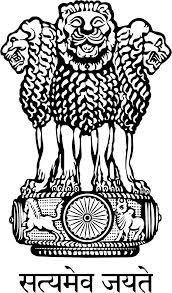
- Surveillance units have been established at all States and District Headquarters (SSUs, DSUs). Central surveillance Unit (CSU) is established and integrated in the National Centre for Disease Control (Formerly National Institute of Communicable Diseases, Delhi).
- Training of State/ District Surveillance teams (Training of Trainers) has been completed for all 35 States /UTs.
- IT network has been established by connecting 776 sites at all States /Districts HQ and premier institutes in the country for data entry training, video conferencing and outbreak discussion.
- A portal under IDSP has been established for data entry and analysis, to report outbreaks and to download reports, training modules and other material related to disease surveillance ( www.idsp.nic.in).
- Presently, about 90% districts in the country report weekly surveillance data through portal. The weekly data gives information on the disease trends and seasonality of diseases. Whenever there is rising trend of illness in any area, it is investigated by Rapid Response Team to diagnose and control the outbreak. Data analysis and actions are being undertaken by respective States/District Surveillance Units.
- On an average 30 outbreaks are reported every week by the States to CSU. A total of 553 outbreaks were reported in 2008, 799 outbreaks in 2009, 990 outbreaks in 2010, 1675 outbreaks in 2011 and 1584 outbreaks in 2012. In 2013, 1964 outbreaks have been reported. Majority of the reported outbreaks were of Acute Diarrhoeal diseases, Food Poisoning, Measles etc. The weekly outbreak report generated by the CSU is shared with all key stakeholders including the Prime Minister’s Office. This is significant because it indicates the paradigm shift in the outbreak reporting attitude (from the traditional reluctance to report outbreaks to one that encourages outbreak reporting and response) enabled by the project.
- Media scanning and verification cell was established under IDSP in July 2008. It detects and shares media alert with concerned State /Districts for verification and response. A total of 2562 media alerts were reported from July 2008 to 31st December 2013. Majority of the alerts were related to diarrhoeal diseases and vector borne diseases.
- A 24×7 call center was established in February 2008 to receive disease alerts all across the country on a toll free telephone number (1075). The information received is provided to the States/ Districts surveillance units through e- mail and telephone for investigation and response. The call centre was extensively used during 2009 H1N1 influenza pandemic and dengue outbreak in Delhi in 2010. About 2.7 lakh calls have been received from beginning till December, 2013, out of which more than thirty five thousand calls were related to Influenza A H1N1.
- Twelve labs have been strengthened and made functional under IDSP for Avian/ H1N1 influenza surveillance.
- Recruitment of contractual manpower under IDSP has been totally decentralized in May 2010, so that the State Health Societies recruit them at the earliest. About 395 Epidemiologists, 61 Microbiologists and 21 Entomologists have joined in States/ Districts by December 2013. States have been requested to expedite filling up the remaining contractual positions.
- A referral lab network has been established in 9 States (Gujarat, Punjab, Rajasthan, Uttarakhand, Karnataka, Tamil Nadu, Maharashtra, Andhra Pradesh and West Bengal), using the existing functional labs in the medical colleges and other major centers in the States and linking them with adjoining Districts for providing diagnostic services for epidemic prone diseases during outbreaks. Additional 23 identified medical college labs in Bihar, Assam, Odisha, Tripura, Kerala, Haryana, Jammu & Kashmir and Manipur were included in the laboratory network in 2012-13.



























